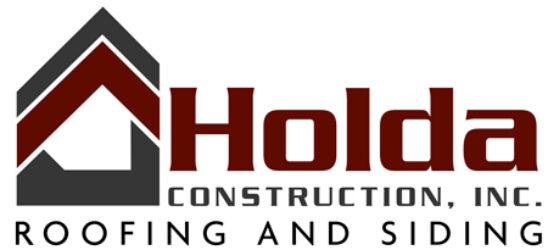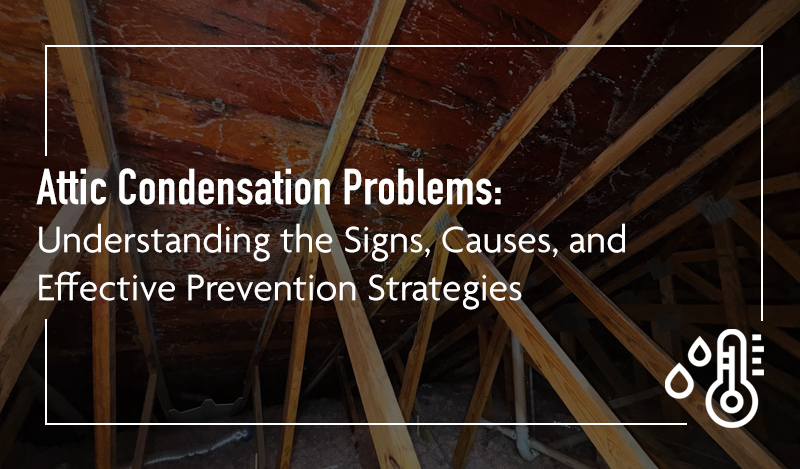At Holda Construction in the Northwest Suburbs of Chicago, we often encounter homes with attic condensation issues. Understanding the symptoms, causes, and prevention methods is crucial for maintaining the integrity and health of your home.
In this blog, we take a look at some past projects and delve into these issues to help you protect your property and ensure a comfortable living environment.
Symptoms of Attic Condensation
Whether you’re inspecting your own attic or looking to understand the different factors we look for during an inspection, the following list can help you better understand the signs to look for when there is suspected attic condensation:
1. Mold and Mildew Growth
These organisms can develop on various surfaces in your attic, including insulation and stored items, posing health risks, particularly for individuals with allergies or respiratory issues.
2. Wood Rot and Structural Damage
Condensation can lead to the deterioration of wooden structures like beams and rafters, compromising the integrity of your home.
3. Insulation Damage
Wet insulation loses its effectiveness, leading to reduced R-values and higher energy costs due to heat loss.
4. Ice Dams
These form when melted snow refreezes at eaves, blocking proper drainage and potentially causing water damage.
5. Rust and Corrosion
Metal components like nails and HVAC systems are prone to rust and corrosion, which can lead to failure over time.
6. Peeling Paint or Wallpaper
Moisture seeping into living spaces can cause ceiling water stains and the peeling of paint or wallpaper.
7. Musty Odors
A clear indication of excess moisture and potential mold growth.
8. Increased Allergen Levels
Poor air quality due to dampness can trigger or exacerbate health issues.
9. Pest Infestations
A damp and moldy attic creates an attractive habitat for pests such as insects and rodents.
Attic Condensation Inspection Multimedia
Causes of Attic Condensation
Once a condensation problem is identified within an attic space, the next step is to locate the cause (or sometimes multiple factors) leading to the issue. These can include:
1. Poor Ventilation
Inadequate airflow traps moist air, leading to humidity buildup.
2. High Indoor Humidity
Activities like cooking and showering increase indoor humidity, which accumulates in the attic.
3. Inadequate Insulation
Improperly installed or insufficient insulation can cause heat loss, contributing to condensation issues.
4. Leaks and Roof Damage
Water intrusion from leaks increases humidity and damages roofing materials.
5. Appliances and Ductwork
Improperly vented appliances can release warm, moist air into the attic.
6. Blocked Soffit Vents
Insulation or debris blocking these vents disrupts natural airflow, leading to condensation.
7. Lifestyle Factors
Daily activities can contribute significantly to the problem.
Prevention Methods
With the causes of the condensation identified, we can then move forward with a customized plan on how to address the moisture issues. As an example, you can view our video below of our project at Ted’s home in Woodstock, IL, which had clear moisture problems in the attic.
We document from start to finish how we resolved his issue with attic moisture by improving ventilation and by properly installing his bathroom vents: a very common issue we see.
While Ted’s home had its unique variety of issues, several other steps may be appropriate to address condensation within your own home. These can include:
1. Improving Attic Ventilation
Installing roof ridge and soffit vents to promote continuous airflow.
2. Assuring There is Adequate Insulation
Proper insulation keeps warm air in living areas and prevents condensation on cold surfaces.
3. Sealing Air Leaks
Addressing leaks around fixtures, plumbing stacks, and attic hatches.
4. Properly Venting Appliances
Ensuring that appliances are vented outside, not into the attic.
5. Controlling Indoor Humidity
Using dehumidifiers and avoiding moisture-producing activities.
6. Regular Roof Inspections
Checking for leaks and damage to prevent water intrusion.
7. Installing Baffles
Baffles help keep soffit vents clear even if covered by insulation.
8. Insulating Ductwork
This step prevents heat transfer from HVAC ducts in the attic.
Conclusion
At Holda Construction, we understand that your home is your haven. Addressing attic condensation problems is key to safeguarding your property’s structural integrity and ensuring a healthy living environment.
If you’re experiencing any of the symptoms mentioned, don’t hesitate to reach out to our team of experts for a thorough inspection and tailored solutions. Remember, prevention is always better than cure when it comes to home maintenance!

